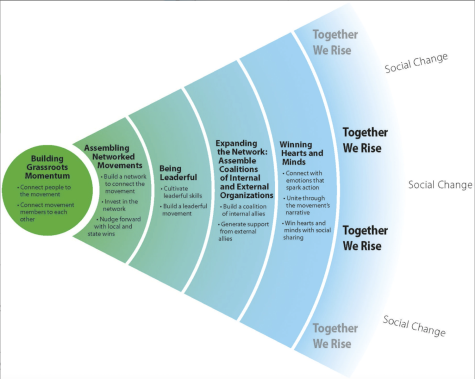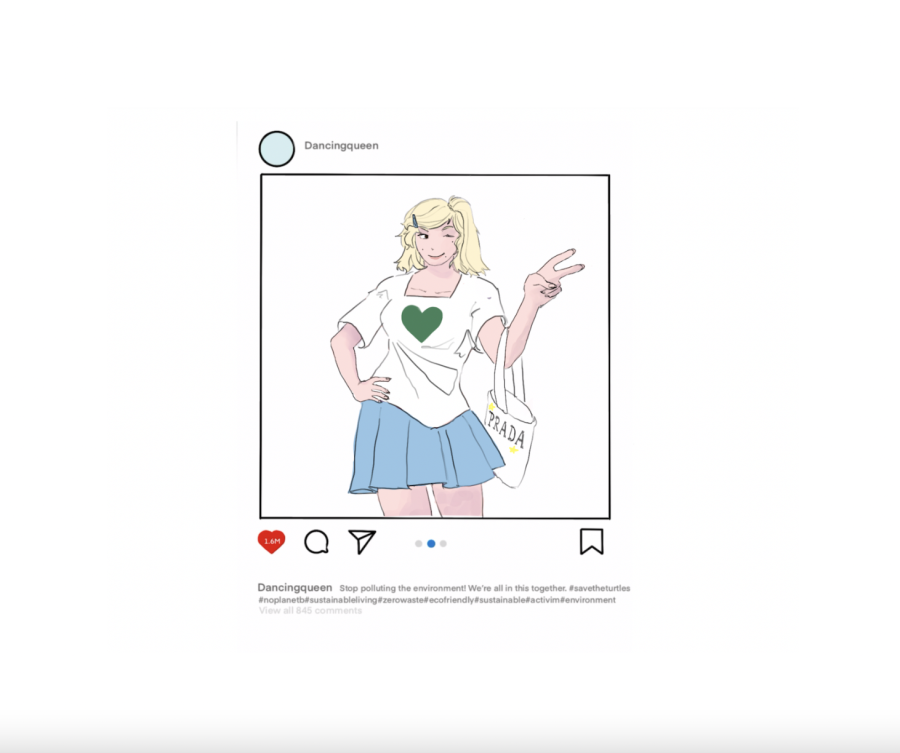Performative activism on social media is activism where the motive is for one’s personal gain, instead of genuine support for a cause. The term rose in popularity in 2020 after the killing of George Floyd and the rise of the Black Lives Matter movement on social media, and although it is seen as for ones personal gain, performative activism is a crucial step in growing a movement and leading it to success.
OPINION: Performative activism provides essential base for environmental movement expansion
Many users of Instagram or TikTok will be familiar with photos of people wearing T-shirts with environmental slogans, bragging about their reusable metal straws and going to the farmers market with their tote bags. Activist social media posts surged in 2020 after the murder of George Floyd, with ubiquitous displays of black squares to show support of the Black Lives Matter movement on Black Out Tuesday.
Forms of activism such as simply posting a black square or environmental slogan has drawn criticism, many believing it is for one’s social capital rather than genuine interest. This is referred to as performative activism. In her mailing list and instagram in 2020, pop singer Lorde explained her frustration with performative activism, mentioning that “it’s hard to strike a balance between self-serving social media displays and true action.”
Additionally, John Metta, a writer on race in the United States, argues that the actions done through performative activism are actually harmful to the movement they are claiming to support because they have no real depth or impact, according to Al Jazeera.
Is performative activism really damaging to the cause it claims to support?
Throughout the 20th and the 21st centuries, there have been social change movements such as the suffragettes, the Vietnam War, AIDS, #MeToo and Black Lives Matter. Performative activism has contributed to these movements as well, from the suffragettes wearing white to show solidarity, to the AIDS protestors “dying in” to raise awareness, to wearing hand-knit pink hats to #MeToo movement protests.
Whether performative or not, these actions are beneficial to the movement they support, and is actually necessary for the movement to gain popularity and grow in strengths.
It’s hard to know if someone is wearing a pink hat to show genuine support or to gain social capital. The truth is, it doesn’t matter. Whether performative or not, these actions are beneficial to the movement they support, and is actually necessary for the movement to gain popularity and grow in strength.
Social movements need mass participation and engagement – the more people you have, the more power you have to make change. According to Society for Consumer Psychology, all social movements need a large number of united people and organizations in order to have a more meaningful impact.
In order for social movements to enact change, they must reach a large audience and mobilize people for action, according to “Why Civil Resistance Works” by Erica Chenoweth and Maria Sephan.
Performative activism, such as posting a photo of yourself wearing a shirt with an environmental slogan on it, allows a movement’s message to spread to a large audience.
Successful social change movements evolve in stages. According to a TED article by Jeremy Heimans and Henry Timms, the first three steps to starting a movement are reaching out and finding people who can help you grow, establishing a brand for your movement that you can sell and making it easier for people to get involved in your movement without any risk, so that the movement can gain support.

Performative activism allows the environmental movement to accomplish these goals by helping it create a culture around sustainability and popularizing it, which allows it to reach more people and create a lifestyle. Performative activism on social media makes it easier for people to be involved and participate without personal risk.
Every movement has to go through a phase of growing its audience and sending out its message, and activism for a self-serving motive is still accomplishing this goal. Like all movements, the environmental movement goes through these stages, and therefore performative activism helps grow it as well, benefiting the environment.
The main argument against performative activism is that the actions themselves, such as posting a black square, do not actually change policies. A person can carry reusable tote bags and still eat their lunch with single-use plastic utensils.
To be impactful, a social movement needs to maintain engagement and move people to a higher participation level, where they are not just doing actions such as using a metal straw or a reusable Starbucks cup without a purpose, according to TED. Participants in a successful social change movement need a united purpose.
In the initial stages of growing a movement, it’s too early to judge what actions are purely performative or what will grow to a higher participation level– one can’t know by looking at a sea of reusable tote bags who will simply be a tote bag carrying “bystander” or who will grow with the movement to be an “upstander.”
Although it may not be impactful by itself, performative activism is critical to gain that sea of reusable tote bags in the first place and pushing the environmental movement forward, so it has people who are united behind the shared purpose of sustainability and are ready to act.


